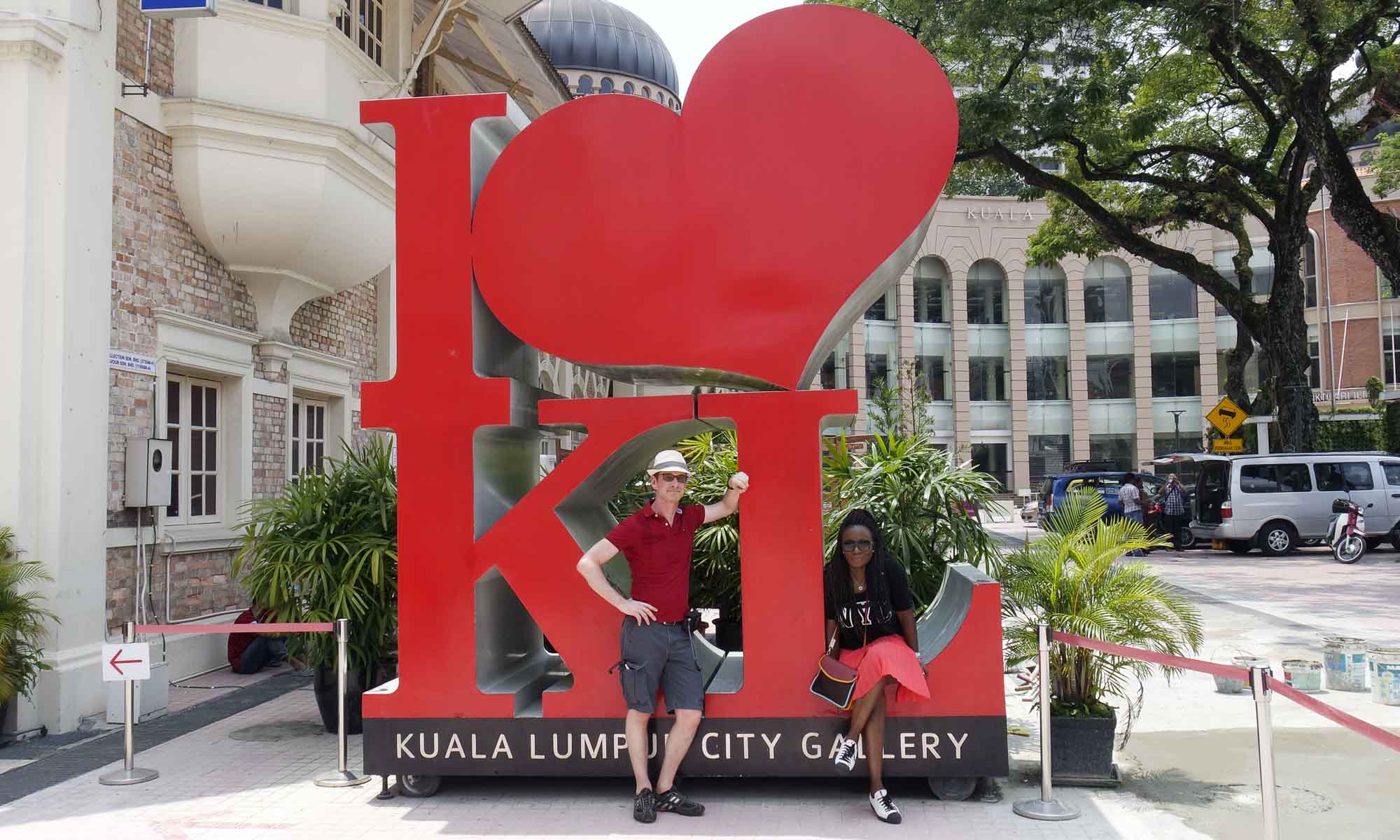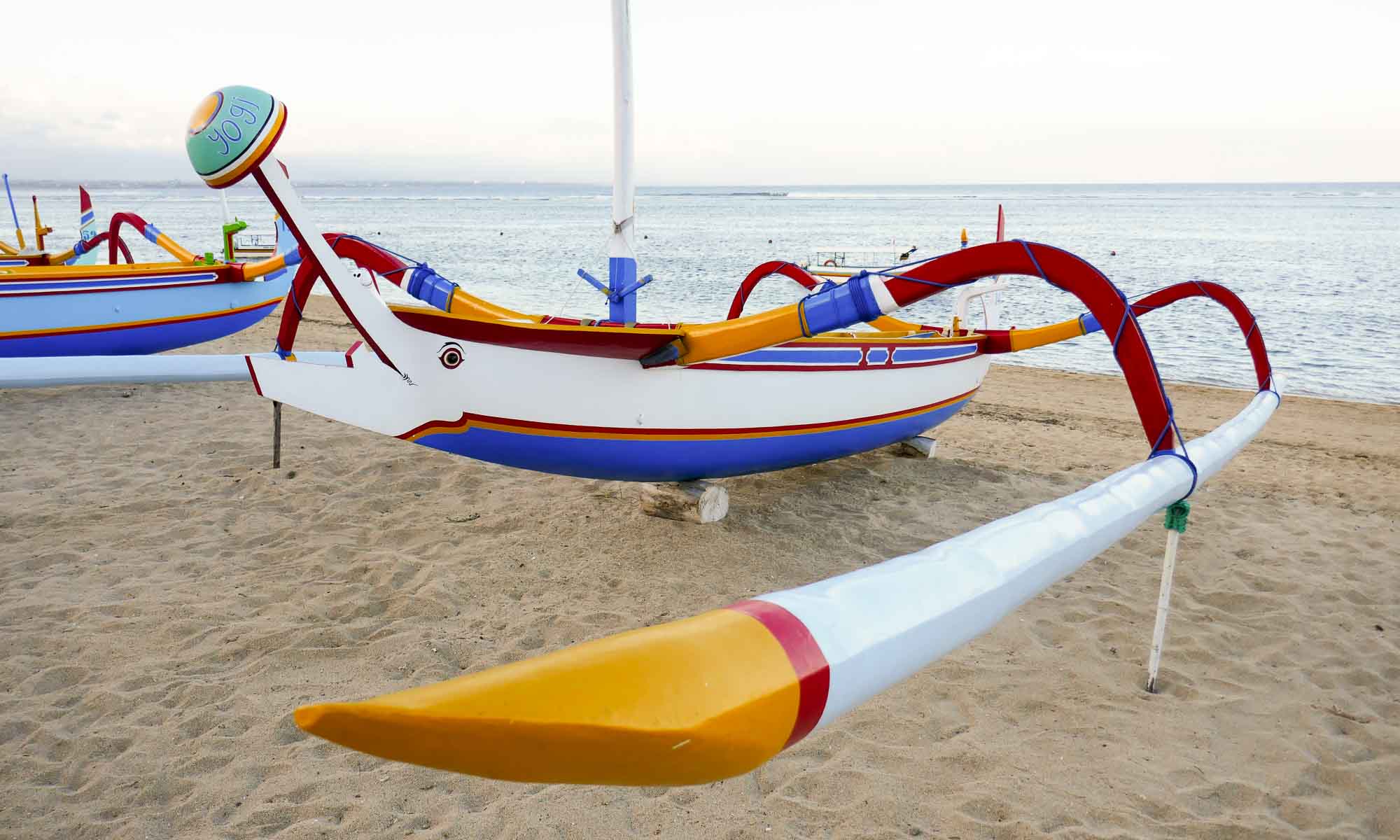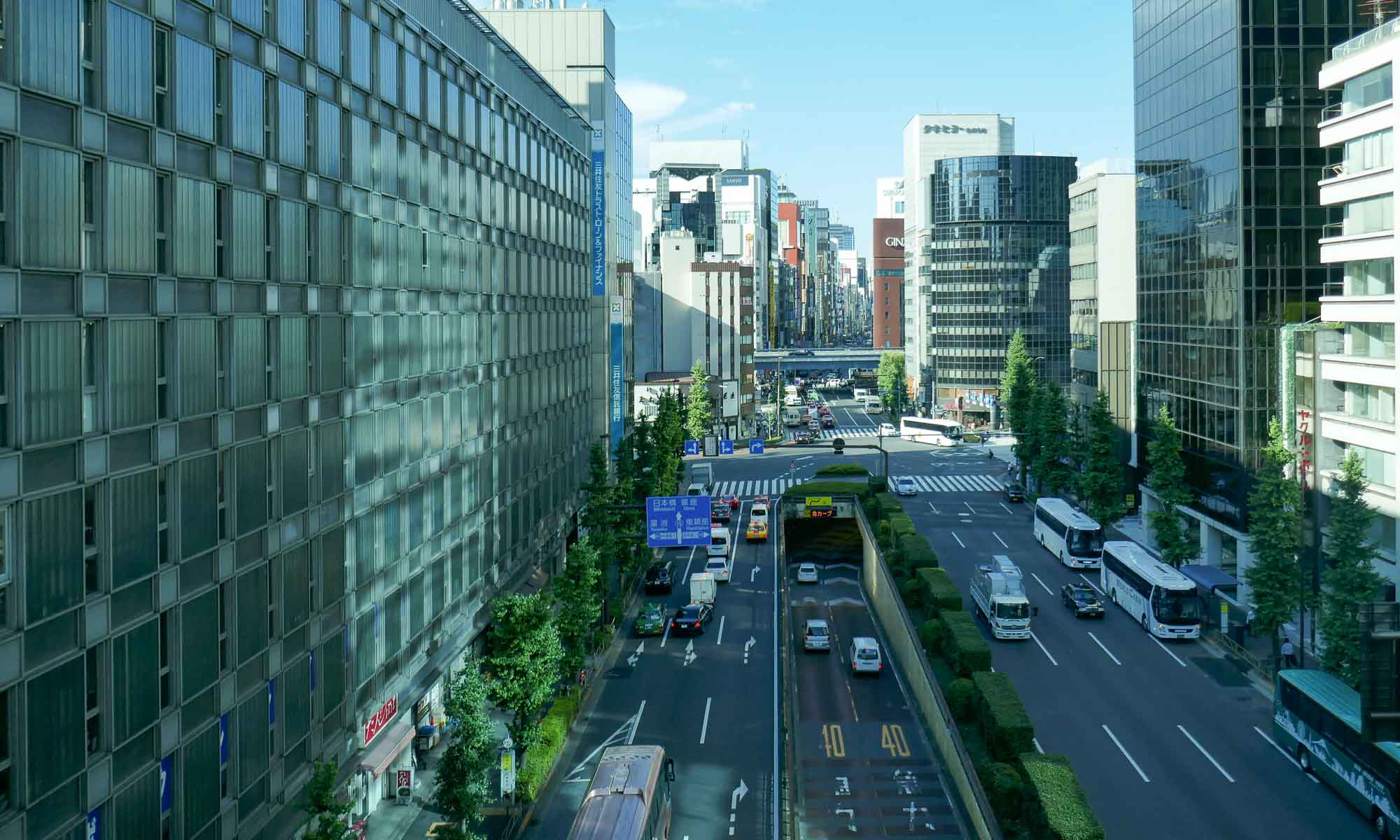Taking the bus from Singapore to Kuala Lumpur (KL) took about 5 hours (see details below), and despite entering the city during a downpour, the view from the bus was quite impressive. As we made our way to our hotel, it was clear to us that we had chosen to visit during KL’s rainy season, and sure enough, similar to Singapore it rained almost every afternoon.
KL is the capital of Malaysia, and while there continues to be tremendous levels of development, you will still find a significant number of old buildings, which adds to the charm of the place. Similar to Singapore, the population of KL is made up of Malays, Chinese, Indians, and a growing number of expats.
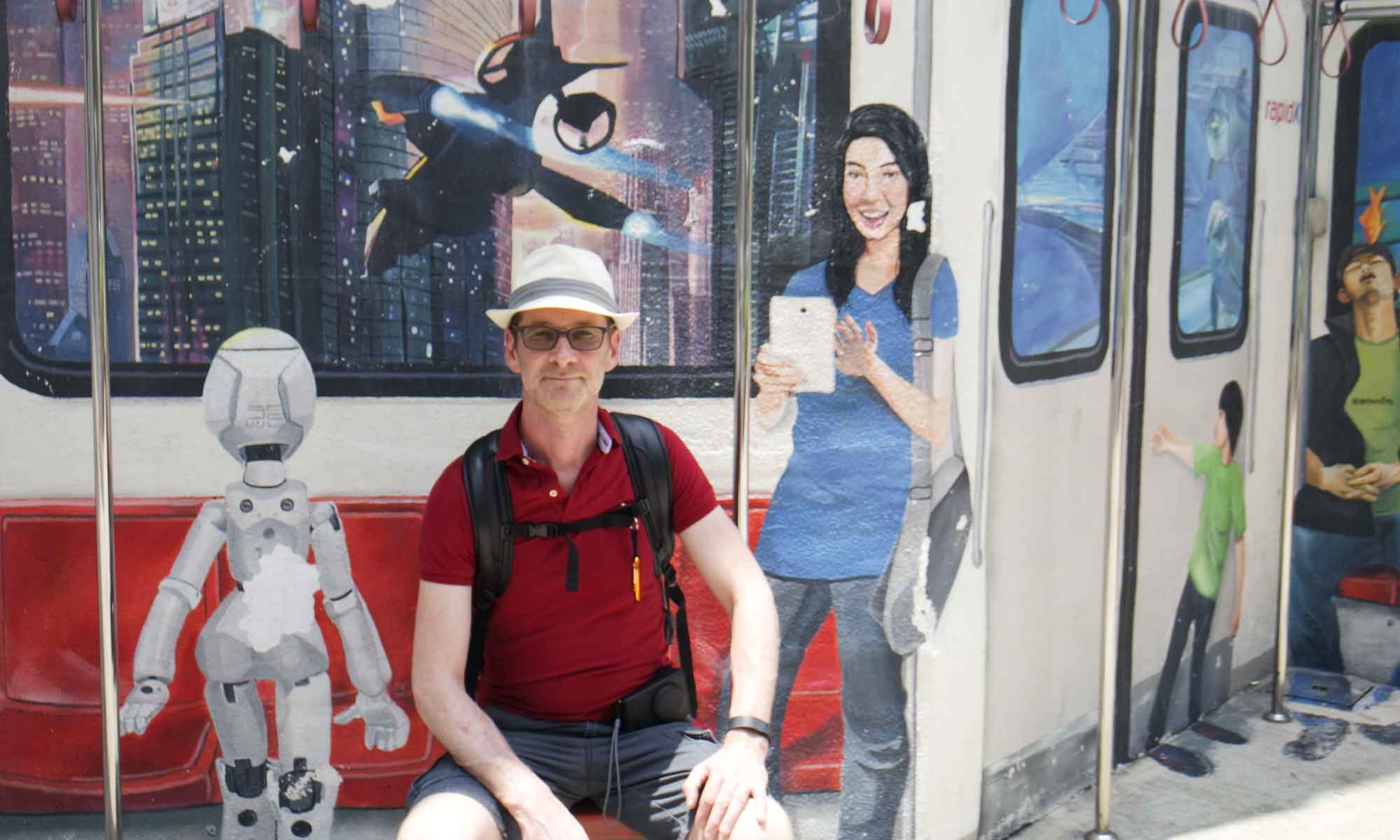
Kuala Lumpur Highlights
We only had 2 and a half days to spend in KL, in which we also wanted to connect with old friends and colleagues, therefore we decided not to venture to the Bird Park, the Botanic Gardens, Batu Caves or areas on the outskirts of town, though we look forward to visiting them during our next trip. The highlights of the places we visited during our short stay include the following:
Petronas Twin Towers and Suria KLCC
The towers are the tallest twin towers in the world and were completed in 1996. They have been featured in a number of movies and both the higher floors and the skybridge can be visited daily. Currently, tickets are RM85 and are sold online by Petronas. At the base of the towers is Suria KLCC, a large shopping complex with shops ranging from luxury to regular high-street stores, a cinema, several restaurants and a food court.
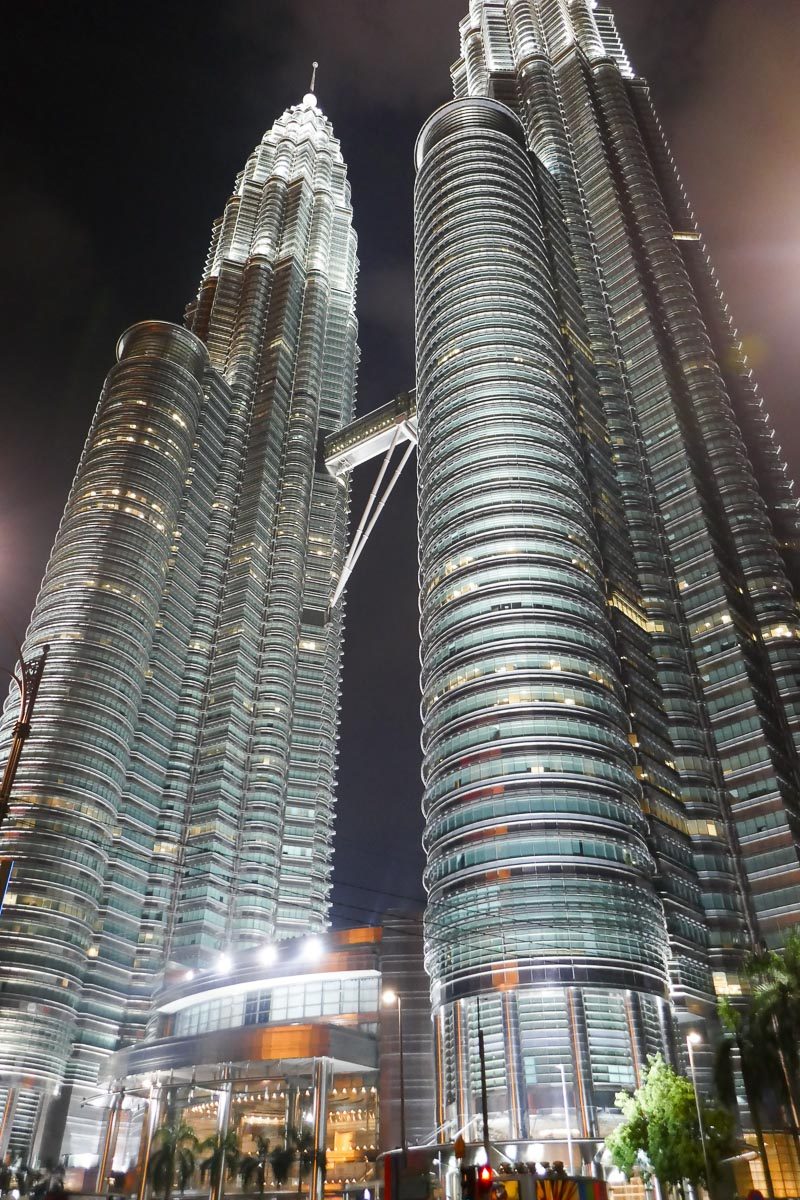
Staying so close to the towers, it inadvertently meant that we ended up at the towers, if only for a few minutes on a daily basis. We visited during the day and in the evening, which were both quite different views and experiences.
On one occasion, after spending some time in Bukit Bintang, we took the KLCC walkway from the Pavillion shopping centre, and ended up in the KLCC park. The walkway is fully airconditioned, and branches off to various buildings along the way.

Ending the walk in the KLCC park with its lush greenery in the midst of the concrete jungle was a nice change of atmosphere. The park grounds include a lake and some water fountains. There are several areas where one would be able to rest and relax out of the glare of the hot sun.

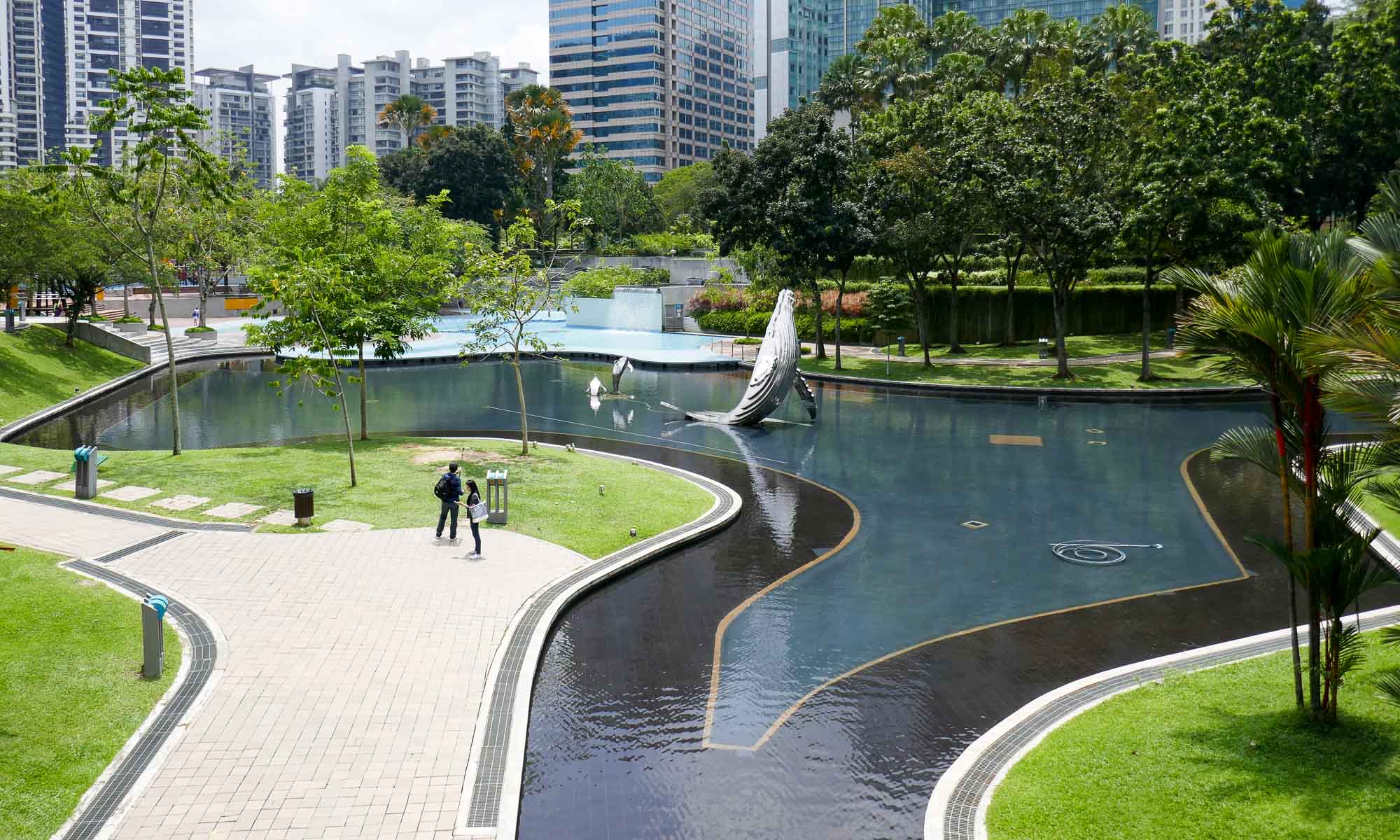
Getting to the Petronas towers
If not using the walkway, the KLCC LRT station is conveniently located at the base of the towers.
Menara KL Tower
The KL tower is the tallest communications tower in SE Asia, and the 7th tallest free-standing tower in the world. It stands at 421 m, while the Eiffel tower is around 325 m tall.
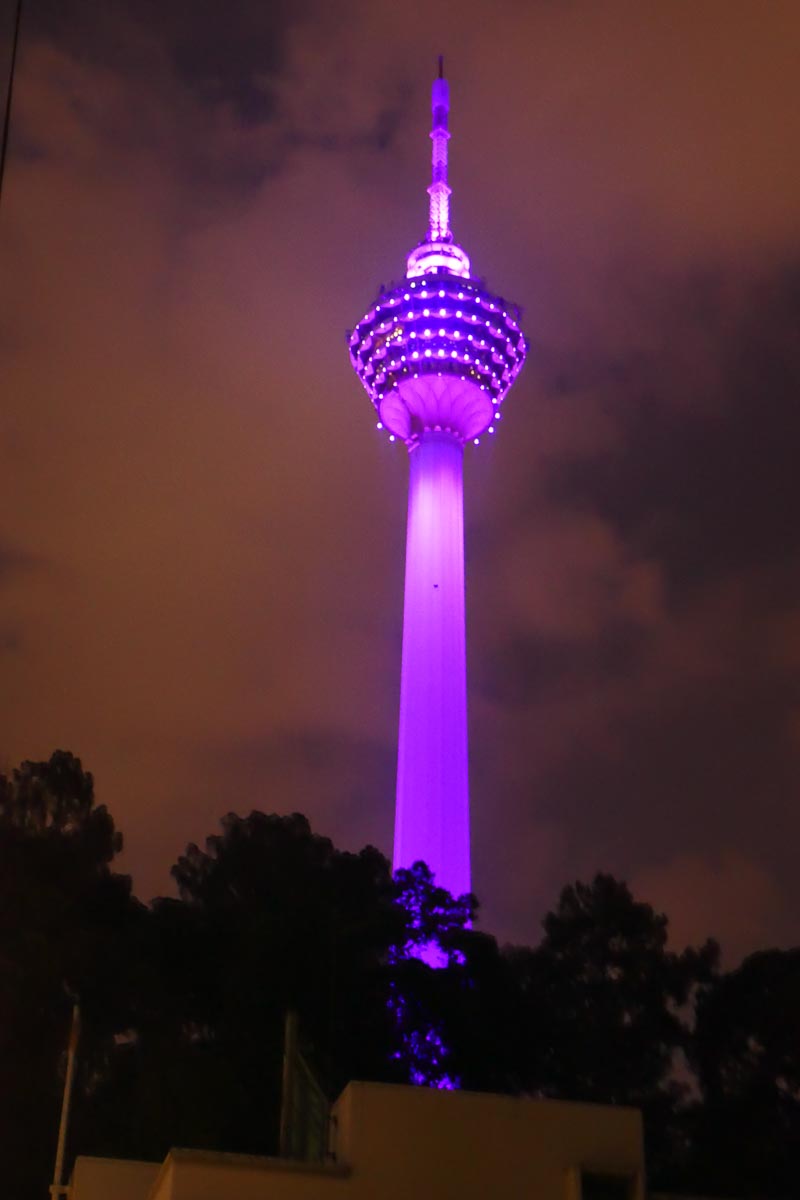
Early one morning we decided to visit the KL Tower. Depending on how much time you want to spend, it could be worthwhile walking through the tropical rain forest at the base of the tower. We opted not to do this and instead took the shuttle to the tower access point. There are two viewing levels: the general observation deck at 276 m above ground level, which costs RM 52 and the Skydeck which is 140 m higher and costs RM 105. We chose to visit the Skydeck, which is not the place to be for those with vertigo. Since we visited shortly after opening time (the tower is open from 09:00 to 22:00 daily), the Skydeck was almost empty and we had time to perfect our poses in the Skybox. The Skybox is a glass box extending out from the Skydeck that enables you to enjoy the view of KL from below your feet.
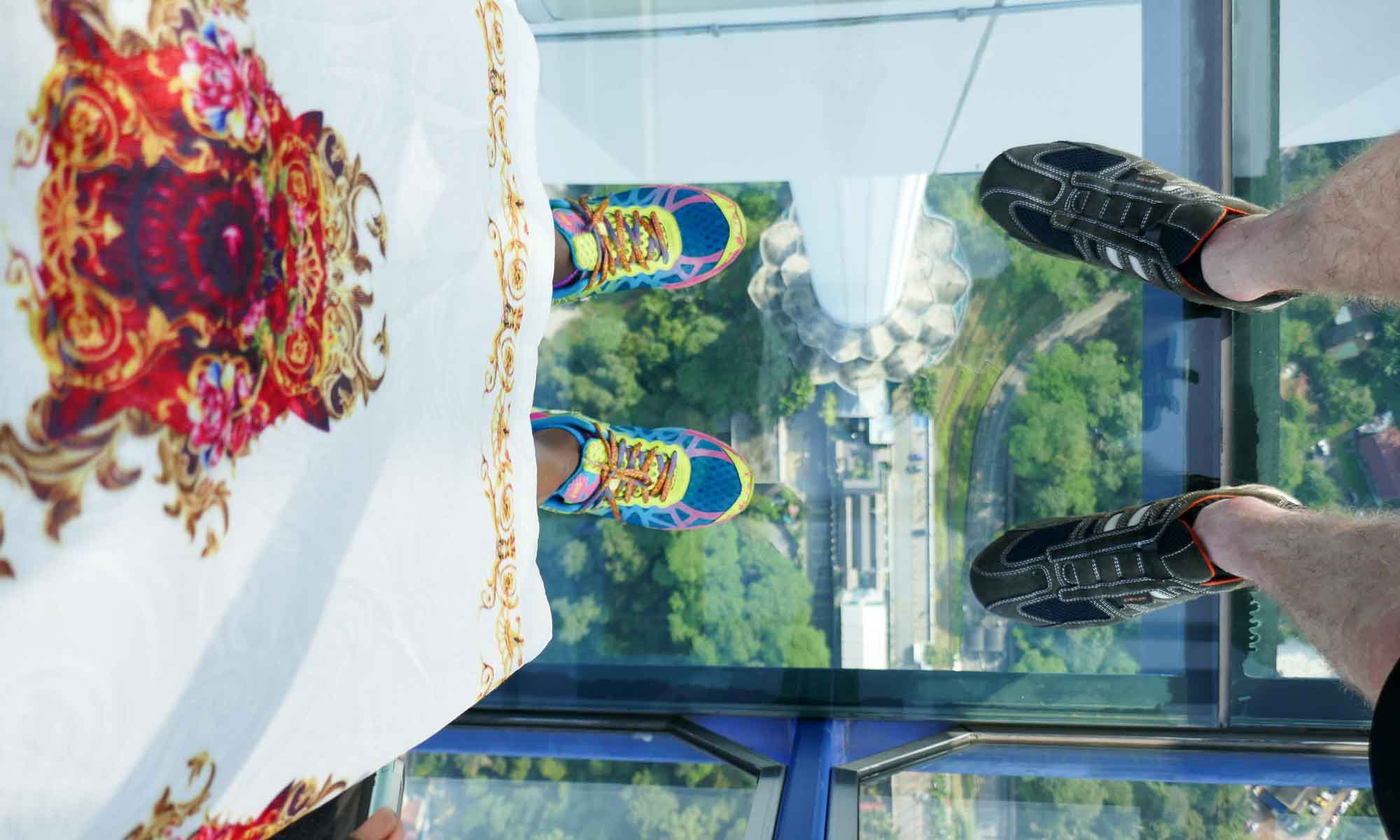
Getting to the KL Tower
The closest stations are the Bukit Nanas monorail station and the Dang Wangi LRT station. The tower is approximately a 10-15 minute walk from Bukit Nanas.
Jamek Mosque
This is the oldest mosque in KL, and was opened in 1909. The mosque is usually open to visitors within certain time brackets but at the time we visited it was closed as it was under refurbishment.
Getting to Jamek Mosque
The closest station is the Masjid Jamek LRT station.
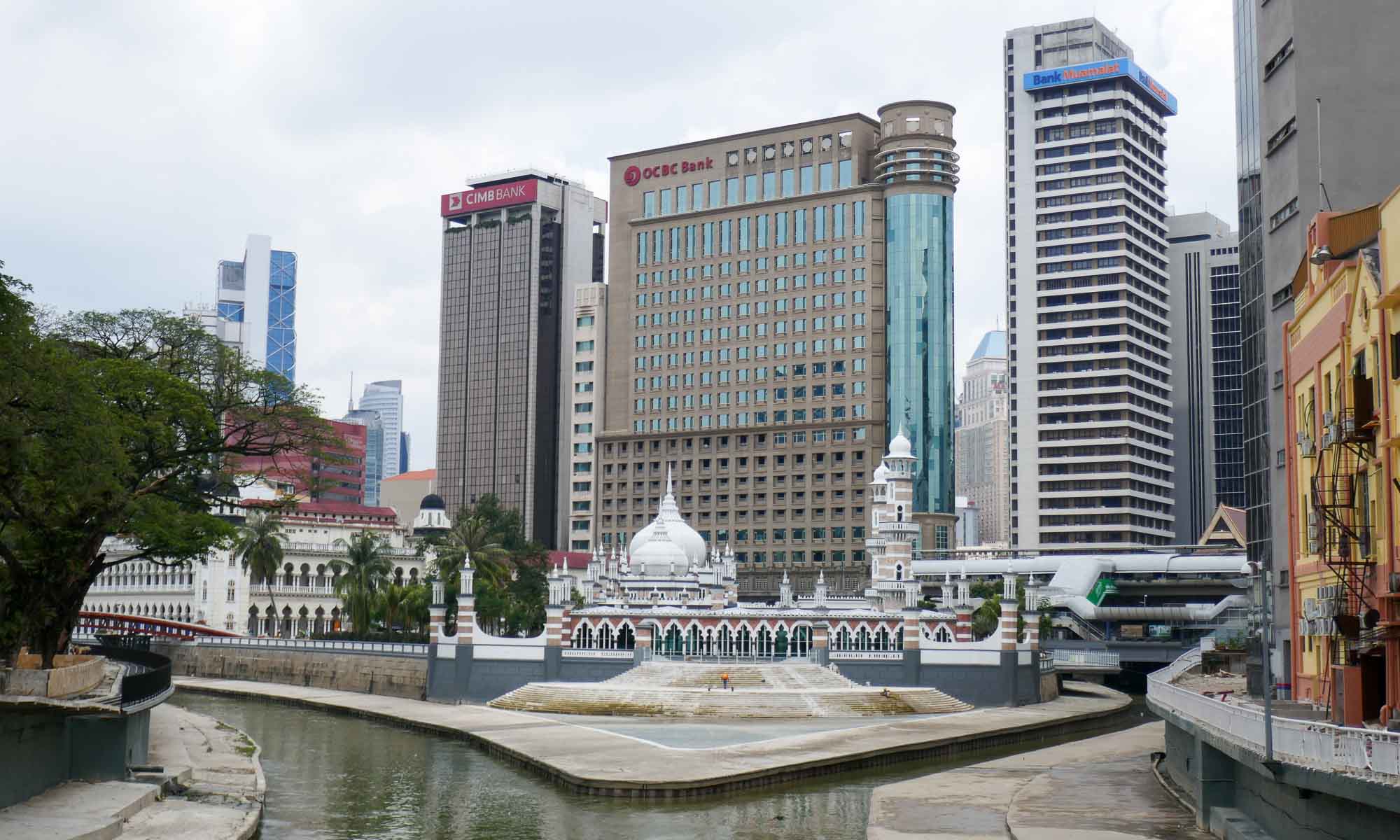
Sultan Abdul Samad building and surroundings
This building (currently the office of the Ministry of Information, Communication and Culture of Malaysia) and the surrounding area have played a role in many significant events for Malaysia, including Malaysia’s declaration of independence, which occurred in Merdeka Square (a square situated in front of it).

Close to the square there are a number of other places which can be visited including the National History Museum and the KL City Gallery. This is also where you will find the “I Love KL” sign.
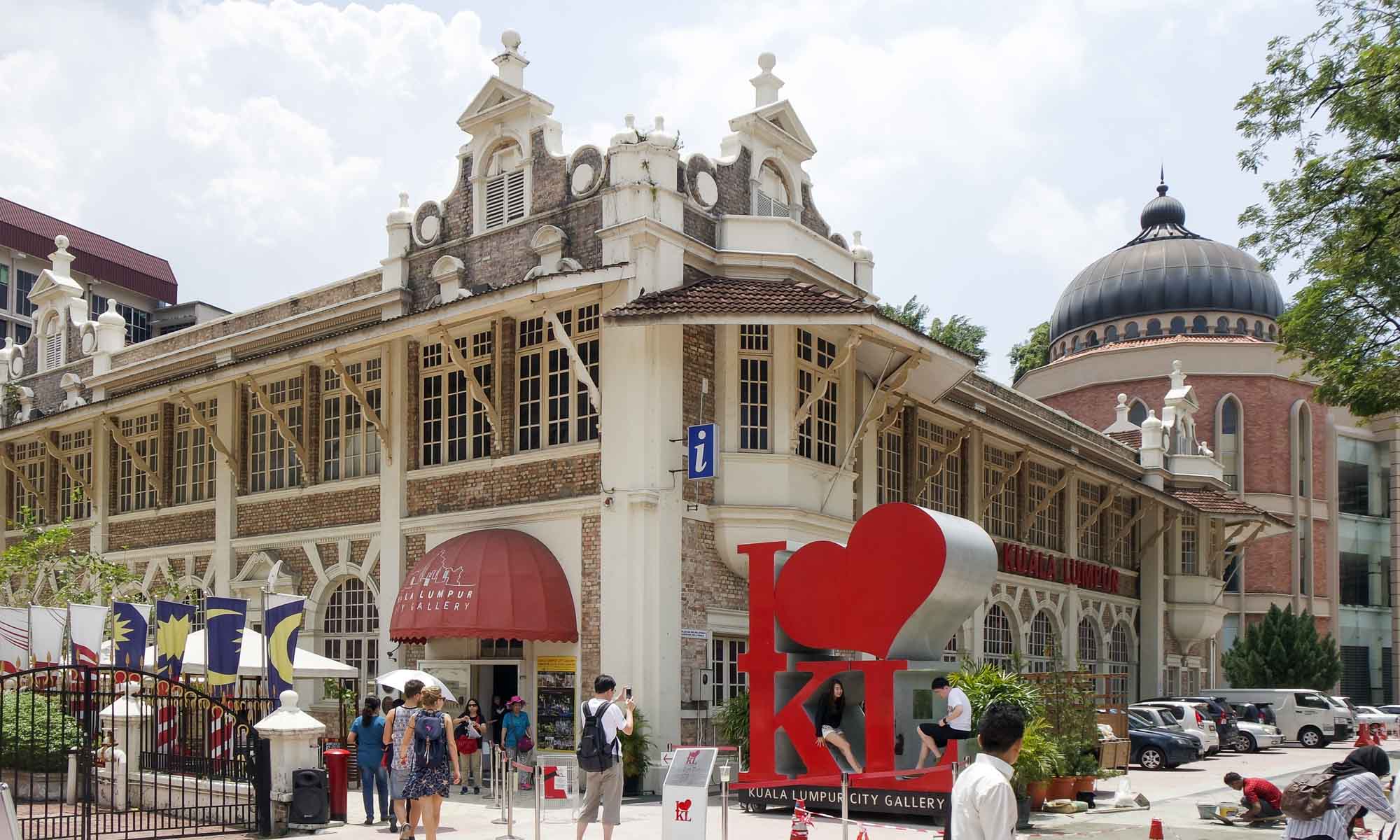
Getting to the Sultan Abdul Samad building
The closest stations are the Masjid Jamek LRT station, or the Pasar Seni LRT station. It is approximately a 10 minute walk from either station.
Central Market
This is an indoor market, with shops which are divided into different zones reflecting the cultural differences within KL. It also includes several restaurants and a food court, and is a good place to go to, if only to get some respite from the hot sun.
Getting to Central Market
The closest station is Pasar Seni LRT station.
Hotel Majestic
While not at actual tourist location, this colonial style hotel played a role in the history of KL and is now a prestigious location for weddings. We were invited for high tea in the Tea Lounge by an old colleague and friend. While I might not be a connoisseur of high-tea, it definitely rates high amongst the high-teas I have experienced and is one I would definitely recommend. In the vicinity you will find several other buildings that have also been built in the colonial style.
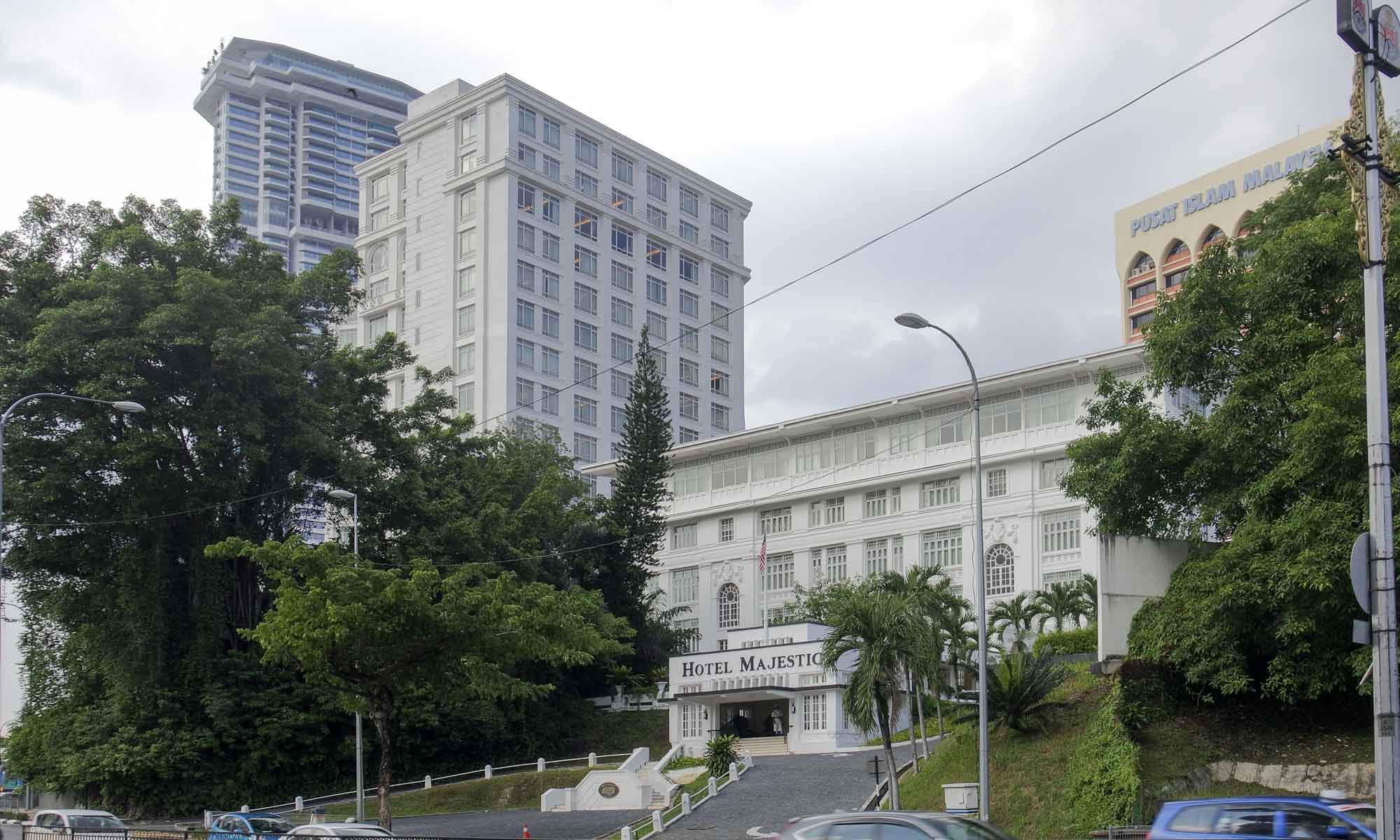
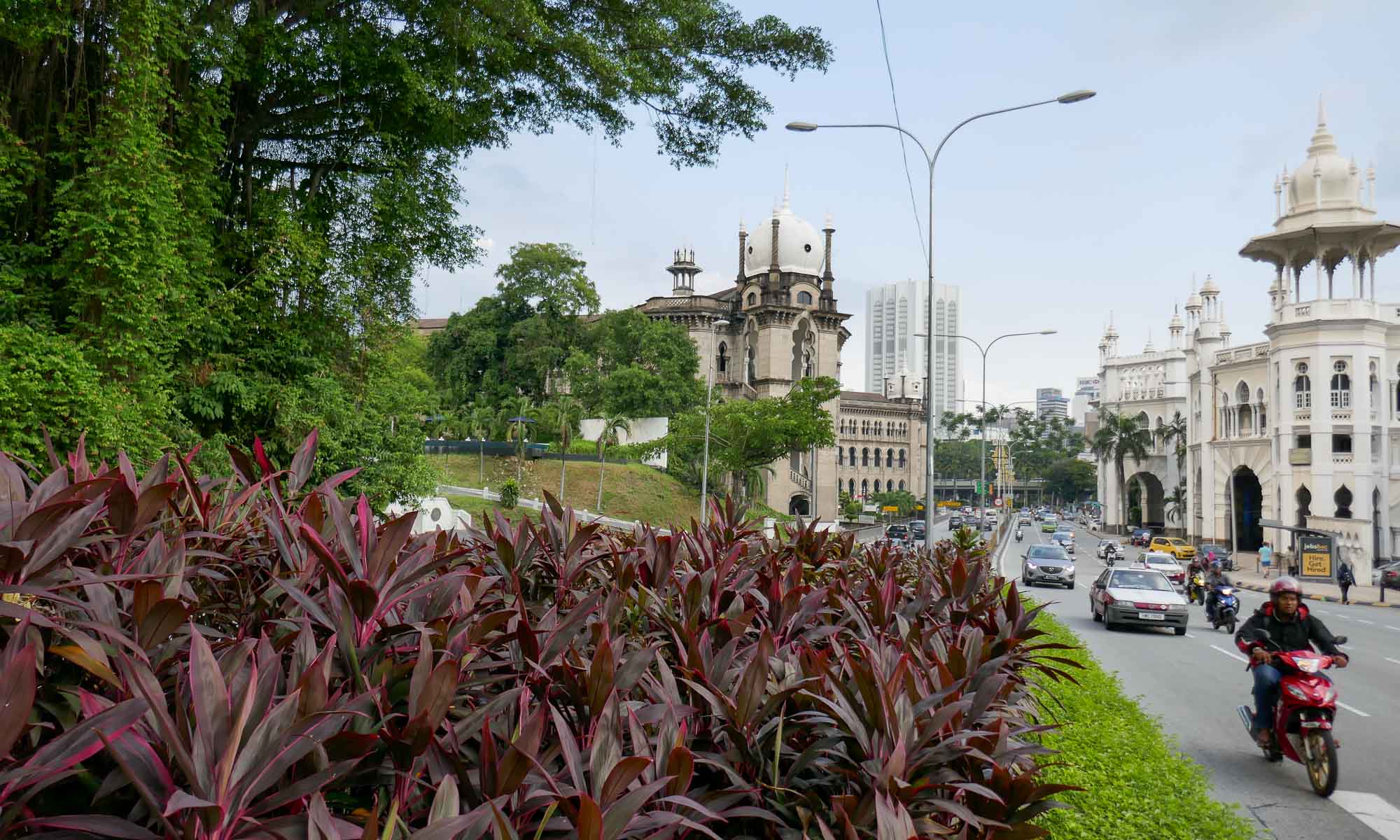

Getting to Hotel Majestic
The closest stations are either KL Central or KL Sentral.
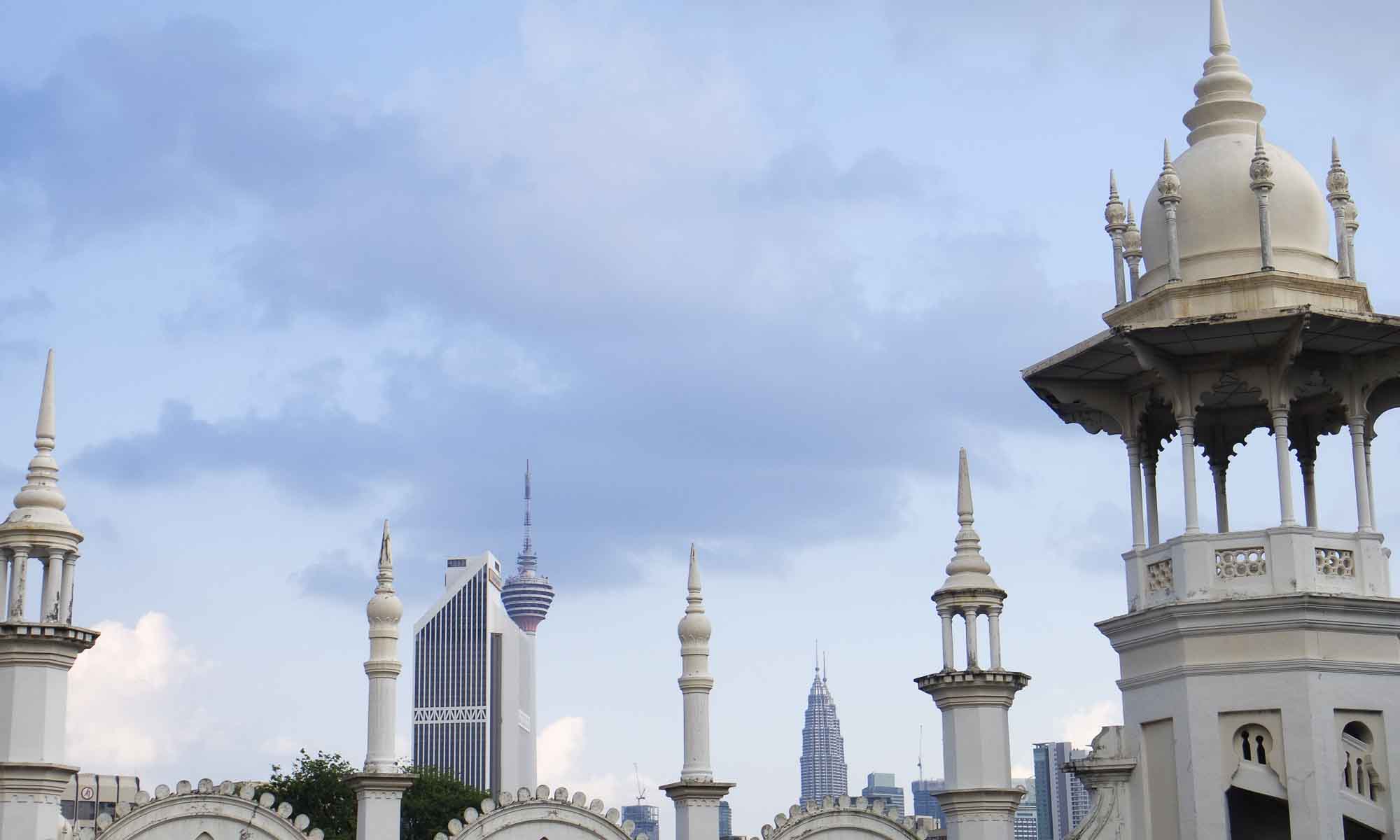
Dining in KL
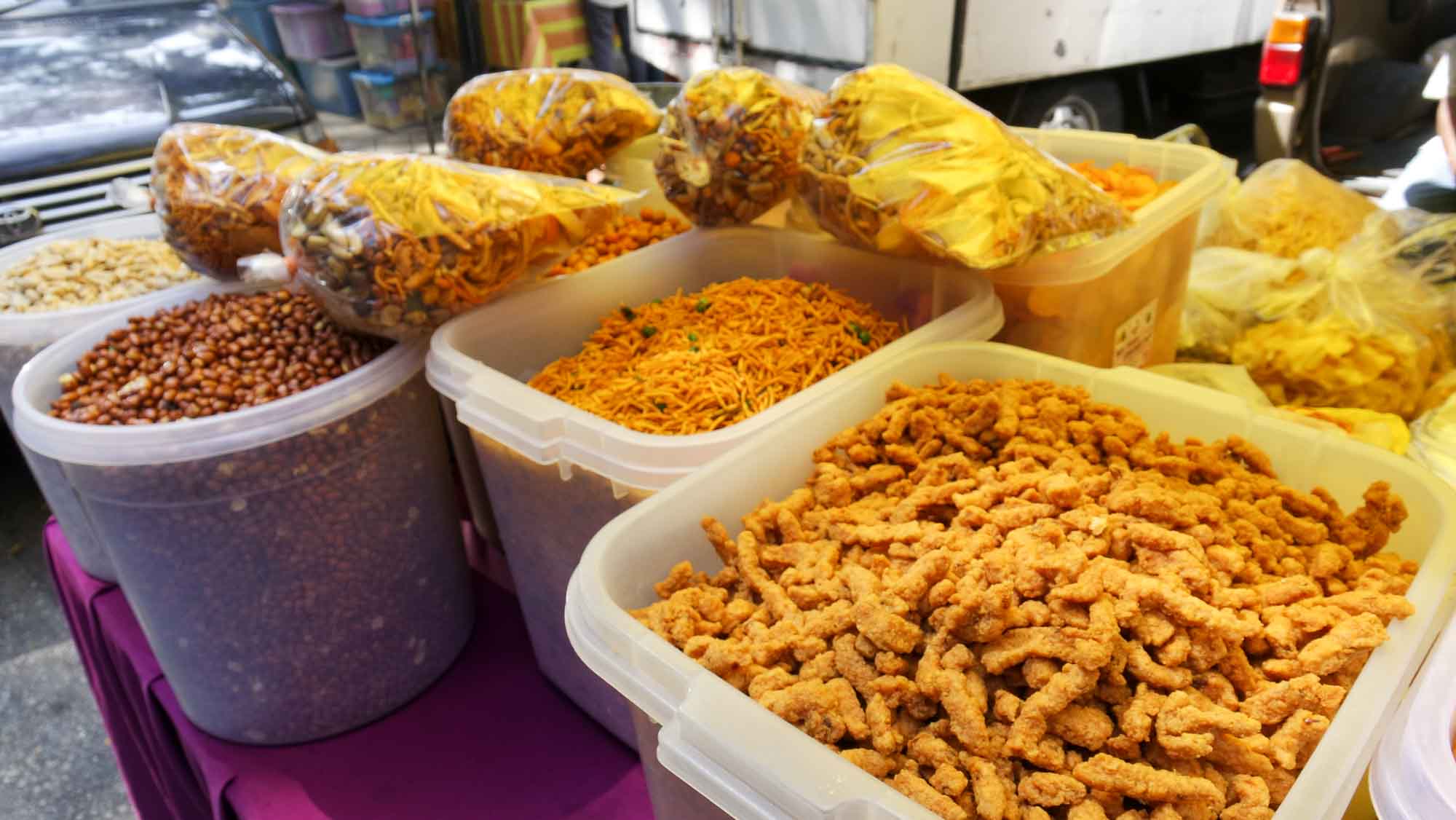
With the mix of cultures, excellent diverse food can be found all over KL in both hawker centres and restaurants. While we could have found reasonably priced options or even cheap choices, for the most part we decided to purchase items for most of our meals from a supermarket. Close to our hotel was the LuLu Hypermarket on Jalan Munshi Abdullah, which more than met our needs.
However, next time in KL we would like to try something different, such as Dinner in the sky, where the dinner table is suspended in the air via a crane-like structure.
Sleeping in KL
Our hotel of choice during our first stop in KL was selected primarily for its proximity to the areas we were interested in visiting. Flora by Crossroads, located on Jalan Ampang is a reasonably priced fairly new hotel. Breakfast is not provided and rooms are very small with hardly any storage.
After our return from Borneo, we stayed at Aloft Kuala Lumpur Sentral for a night. Though higher priced than Flora, the location and views are worth the extra cost. This hotel is a 5 minute walk to KL Sentral via a walkway, and was what we needed as we had an early train ride out the next day.
Staying connected in KL
There are several sim-card plans in Malaysia and its best to compare to find the best plan for your needs. We obtained a U-mobile sim-card for RM 8.50, which provided free 200 MB of hi-speed data and 1 GB of basic data. We added a RM 30 top-up to get an additional 7.5 GB of hi-speed data. This was more than enough for our 20 days in Malaysia.
Getting to KL via bus from Singapore
Depending on your budget there are several bus options. We chose the so-called luxury bus via Transtar, which had seats and legroom better than economy class on most planes, but would not meet the European standards of luxury.
Departure point: Golden Mile Complex, Beach Road
Arrival point in KL: Jalan Imbi
The bus passed through immigration out of Singapore and into Malaysia, and we were required to leave the bus and pass through customs and security at one point. But all in all, process took less than 20 minutes.
Getting around KL
KL’s transportation is very efficient and is a combination of Light Rail Transit (LRT), Commuter Rail (KTM Commuter), Monorail and Rapid KL buses. The LRT consists of the Ampang line and the Kelana Jaya line. If only visiting for a short while, it is best to purchase one-way tokens at the ticket machines, which are based on distance. If visiting for an extended period, MyRapid prepaid cards are available, which are valid on all LRT lines, the monorail and Rapid KL buses.
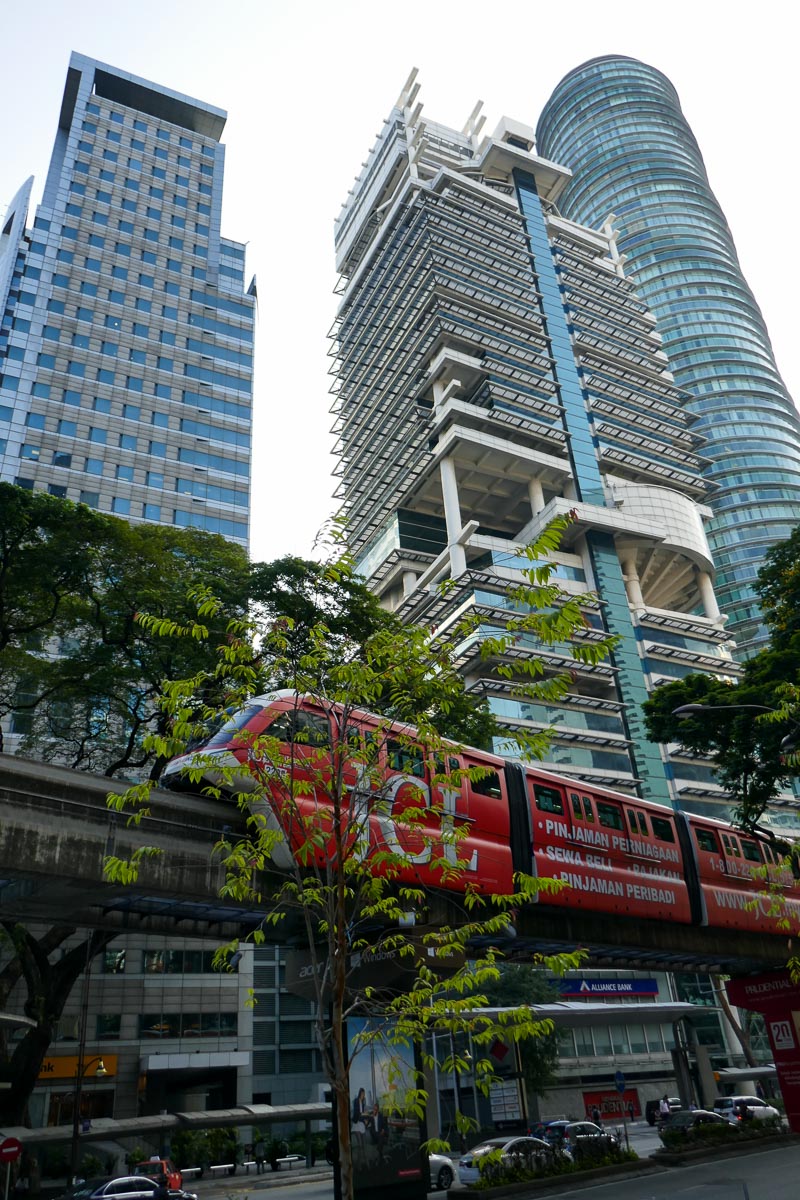
Departing KL
The first time we left KL we flew to Miri and used the KLIA express. A return-trip ticket costs RM 100. Trains leave KL Sentral every 15 minutes, and arrive at KLIA/KLIA 2 in 28 minutes.
The second trip we made, after our return from Borneo, we took a train from KL Sentral to Ipoh. We purchased the ticket to Ipoh a week ahead, as the queues can be long at the ticket counters and the KL-Ipoh journey is a very popular one which is often sold out.
